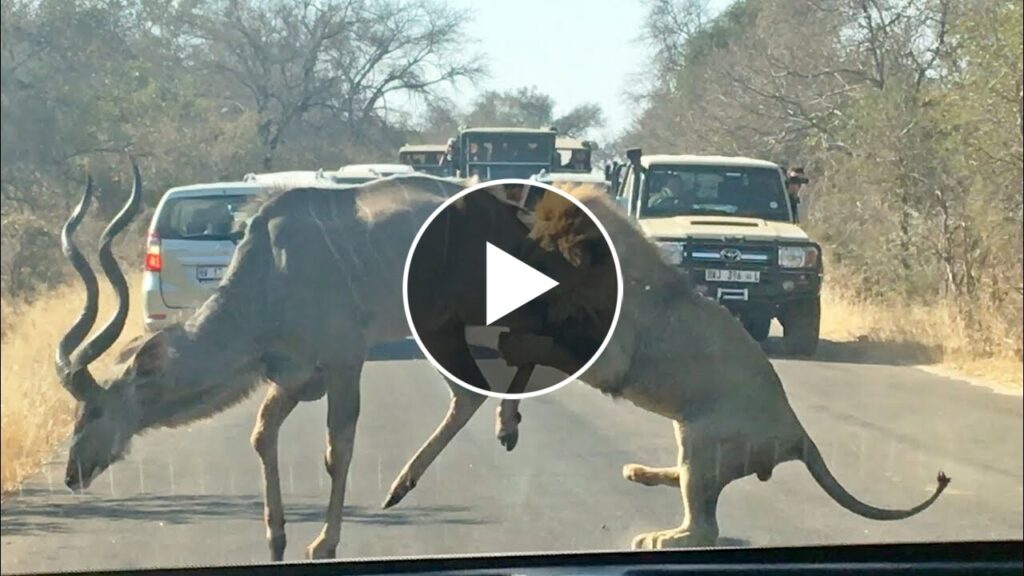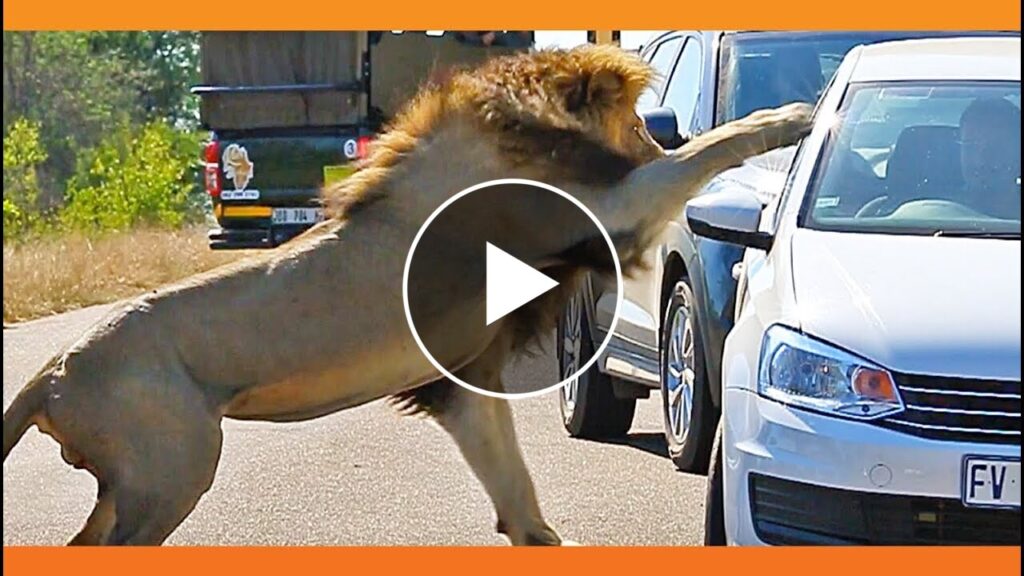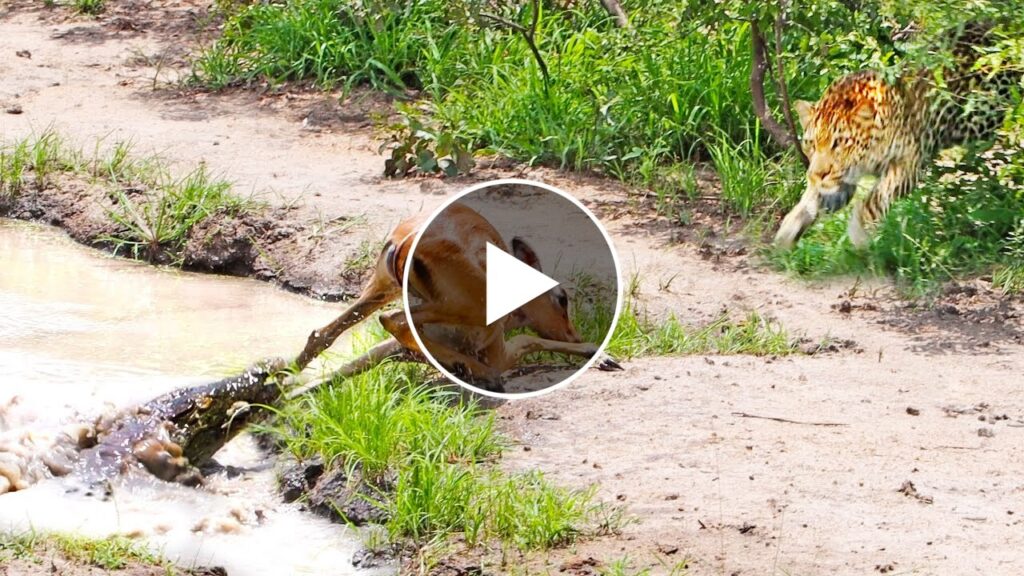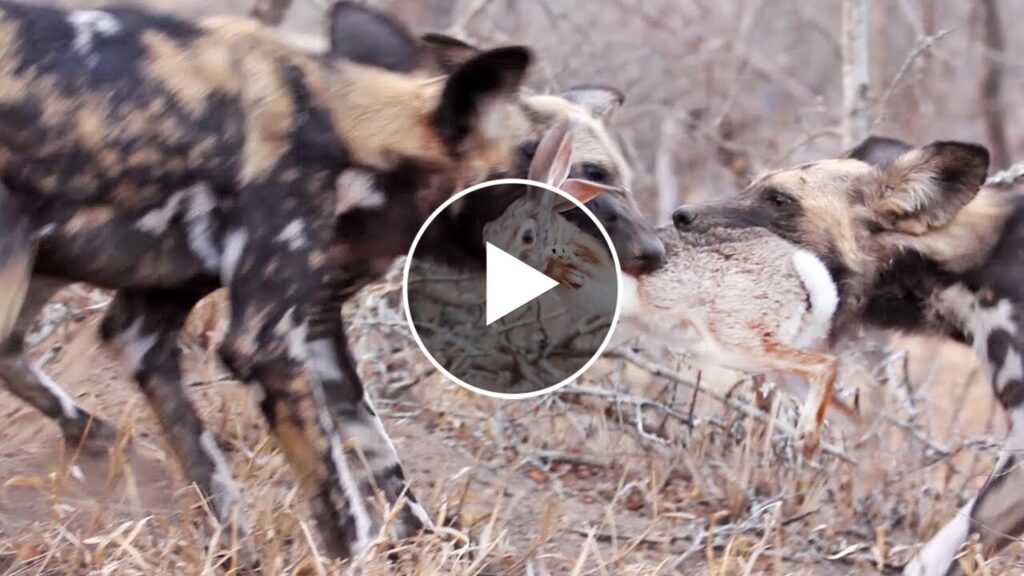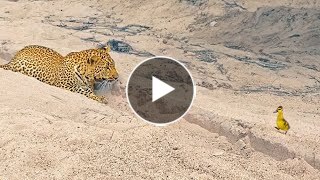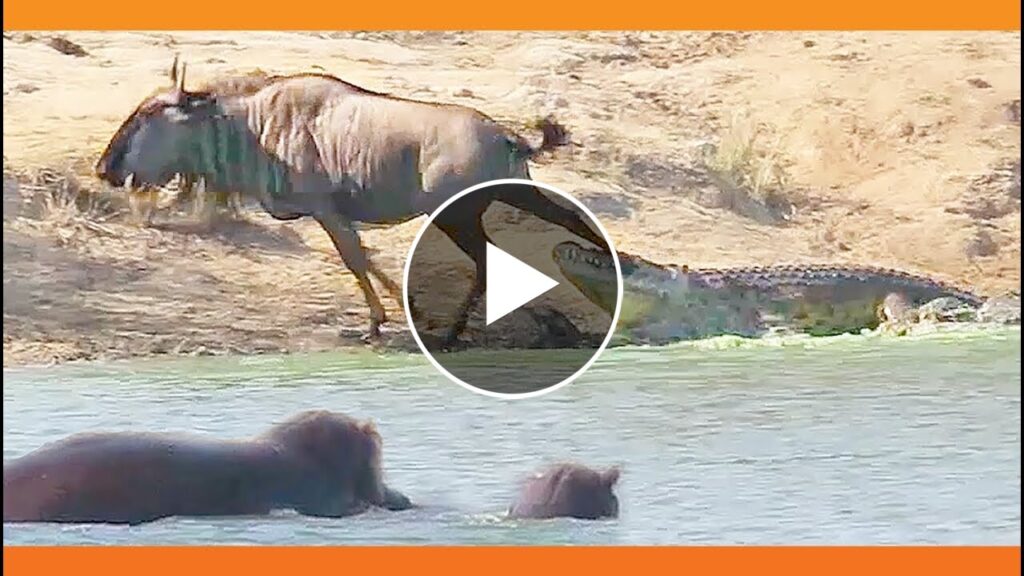A snake launched a sudden and aggressive attack, targeting the head of a nearby monkey. This unexpected encounter unfolded in a dense jungle, where the vibrant sounds of wildlife filled the air. The snake, a stealthy predator, had been lying in wait, camouflaged among the foliage, its scales blending seamlessly with the surrounding environment. As the monkey, curious and unaware of the lurking danger, ventured too close, the snake struck with remarkable speed and precision, aiming for a vulnerable spot.
The moment of impact was both swift and brutal, as the snake’s fangs pierced the monkey’s skin, delivering venom that would quickly incapacitate its prey. The monkey, initially startled, reacted instinctively, attempting to escape the grasp of the serpent. Its agile movements and frantic cries echoed through the trees, drawing the attention of other animals in the vicinity. The struggle between the two creatures highlighted the harsh realities of survival in the wild, where every encounter can mean the difference between life and death.
As the venom coursed through the monkey’s bloodstream, its strength began to wane, and the once lively creature succumbed to the effects of the snake’s bite. The jungle, a place of beauty and brutality, bore witness to this dramatic event, illustrating the intricate balance of predator and prey. In the aftermath, the snake, having secured its meal, retreated into the underbrush, leaving behind a poignant reminder of nature’s unforgiving cycle. The scene served as a stark reminder of the constant struggle for survival that defines life in the wild.
Crocodile vs Grey Langur Monkey
Crocodiles and grey langur monkeys represent two vastly different realms of the animal kingdom, each adapted to their unique environments and lifestyles. Crocodiles, as formidable reptiles, are primarily aquatic and are known for their powerful jaws and stealthy hunting techniques. They inhabit rivers, lakes, and wetlands, where they can remain submerged for extended periods, waiting patiently for unsuspecting prey to approach the water’s edge. Their robust bodies are designed for both swimming and ambushing, making them apex predators in their ecosystems. In contrast, grey langur monkeys are terrestrial primates that thrive in the forests and urban areas of South Asia. They are highly social animals, often seen in groups, and are known for their agility and intelligence, which they use to navigate the complex canopies of their habitats.
The interactions between crocodiles and grey langurs can be quite fascinating, particularly in regions where their habitats overlap. While crocodiles are primarily focused on hunting aquatic animals, they can pose a threat to land-dwelling creatures that venture too close to the water. Grey langurs, being arboreal, are generally cautious and tend to stay away from the water’s edge, but they are not entirely immune to the dangers posed by crocodiles. In some instances, these monkeys have been observed drinking from rivers or foraging near the banks, which can lead to precarious encounters. The langurs’ keen sense of awareness and their ability to communicate with one another help them avoid potential threats, showcasing their adaptability in the face of danger.
Moreover, the ecological roles of both species highlight the intricate balance of their respective environments. Crocodiles play a crucial role in maintaining the health of aquatic ecosystems by controlling fish populations and facilitating nutrient cycling through their predatory behaviors. Meanwhile, grey langurs contribute to forest dynamics by aiding in seed dispersal and maintaining the structure of their habitats. The coexistence of these two species, despite their differences, underscores the complexity of ecological relationships and the importance of each species in sustaining the biodiversity of their environments. Understanding these interactions not only enriches our knowledge of wildlife but also emphasizes the need for conservation efforts to protect their habitats from human encroachment and environmental degradation.
Snake bites monkey’s head
A remarkable incident unfolded when a compassionate woman came to the aid of a baby monkey in distress. The young primate had found itself separated from its mother, wandering alone in a dense forest. Observing the vulnerable creature, the woman felt an immediate sense of urgency and empathy. She approached cautiously, aware that the baby monkey might be frightened and unpredictable. With gentle movements and a soothing voice, she managed to gain its trust, offering a safe haven from the dangers of the wild.
Once the baby monkey was in her care, the woman took swift action to ensure its well-being. She carefully examined the little one for any signs of injury or distress, providing comfort and warmth. Recognizing the importance of reuniting the baby with its mother, she began to search the surrounding area, calling out softly in hopes of attracting the attention of the mother monkey. Her determination was fueled by a deep understanding of the bond between mother and child in the animal kingdom, and she was resolute in her mission to restore that connection.
After an extensive search, the woman’s efforts bore fruit when she spotted the mother monkey nearby, visibly agitated and searching for her lost offspring. With great care, she approached the mother, holding the baby monkey close to her chest. The reunion was heartwarming; the mother quickly recognized her child and rushed over, gently taking the baby in her arms. The woman watched with a sense of fulfillment, knowing that her actions had made a significant difference in the lives of both the baby monkey and its mother, reinforcing the profound impact of compassion and kindness in the natural world.
New Abandoned Found in wild That He came with Baby bottle Milk Look Need Rescue
A new case of abandonment has emerged in the wilderness, drawing attention to the urgent need for intervention. A vulnerable infant was discovered, accompanied only by a baby bottle filled with milk, highlighting the dire circumstances surrounding this situation. The child’s presence in such a remote area raises significant concerns about their safety and well-being, prompting immediate calls for rescue efforts to ensure the infant receives the care and protection they desperately require.
The discovery of the abandoned child has sparked a wave of compassion and urgency among local authorities and community members alike. As details unfold, it becomes increasingly clear that the child’s survival hinges on swift action. The baby bottle, while a sign of nourishment, also serves as a stark reminder of the precariousness of the situation. It is crucial that rescue teams mobilize quickly to assess the child’s health and provide the necessary support, both physically and emotionally, to help them recover from this traumatic experience.
In light of this distressing event, it is essential to address the broader issues surrounding abandonment and child welfare. This incident not only highlights the immediate need for rescue but also calls for a deeper understanding of the factors that lead to such heartbreaking circumstances. Community outreach and support systems must be strengthened to prevent future occurrences and ensure that vulnerable children are protected and cared for in safe environments. The hope is that through collective efforts, we can create a society where no child is left to face such challenges alone.


